Highlights from the Old Master Paintings Auction Week, Various European Locations
In November major European auction houses are presenting a selection of Old Masters sales, featuring artworks by prominent painters from the 14th to the 18th century. Lot-Art has selected for you the highlights of the old masters auctions, which can be browsed here for direct bidding:
Dorotheum, Old Master Paintings (10 November)
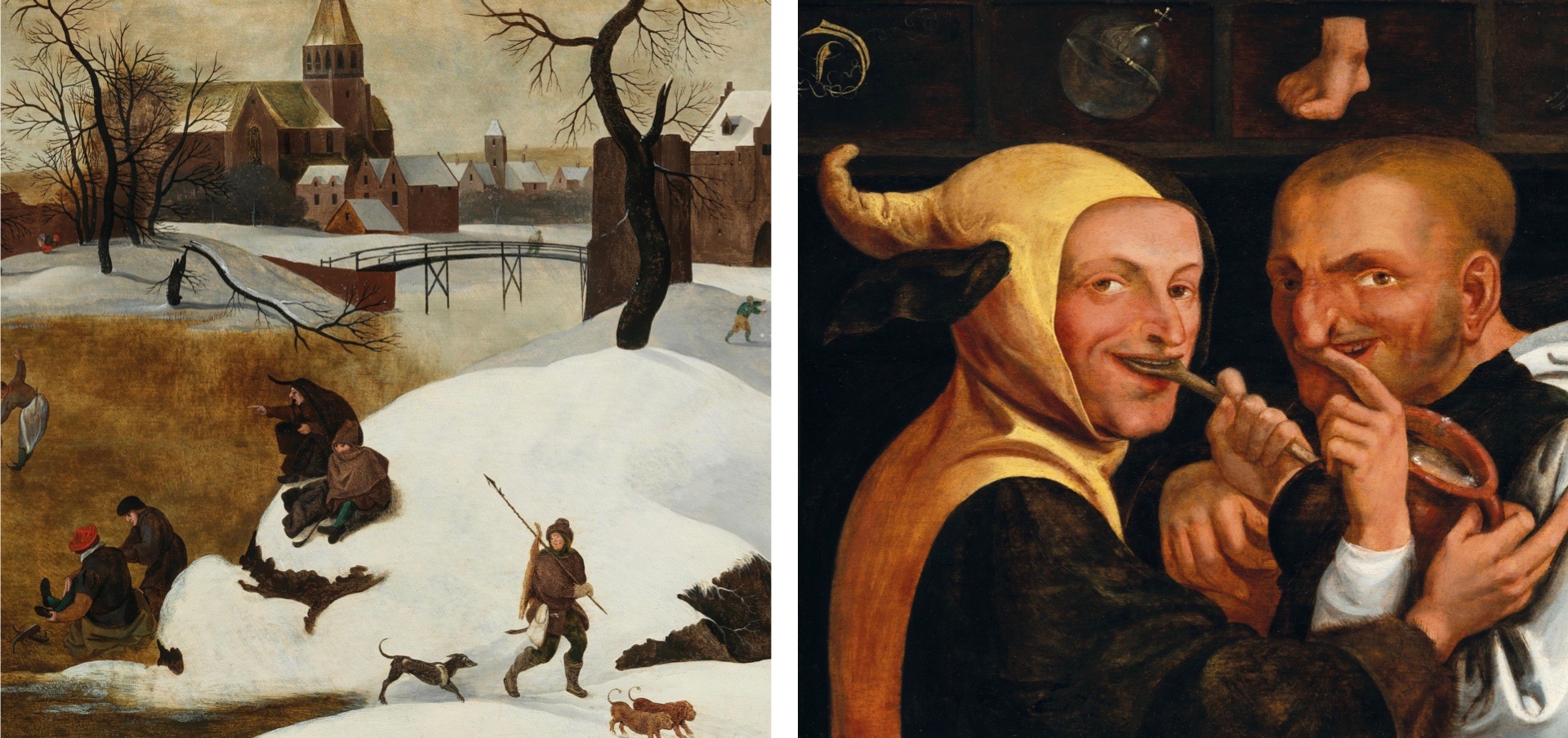
Left: Abel Grimmer - A winter landscape with skaters; Right: Netherlandish School, 16th Century - ‘De wereld voedt vele zotten’ - The world feeds many fools
Abel Grimmer - A winter landscape with skaters
oil on panel, 50 x 76 cm, framed
Abel Grimmer is known principally for his numerous small-scale paintings of country scenes, sometimes with biblical themes. His landscapes show splendid colour harmonies and a certain linearity through their slightly schematized compositions and their tendency to represent buildings as geometric shapes. This artwork represents a winter landscape populated by numerous peasants and skaters. The expansive snow is modeled thickly over the countryside, with shadow cast upon it by both the buildings and figures in a way that evokes a sense of crisp wintry light and also helps to articulate the forms. The icy setting of this panel could also be interpreted as an allegory of the precariousness of human existence. See Price Estimate...
Netherlandish School, 16th Century - ‘De wereld voedt vele zotten’ - The world feeds many fools
oil on panel, 36.5 x 48.5 cm, framed
The present painting is an interesting example of the humorous, yet moralising, Flemish genre painting so sought-after by erudite collectors of the mid-16th century. The image is inspired by the Dutch proverb “De wereld voedt vele zotten” (the world feeds many fools): the gesture of using their forefinger to touch or wipe their nose suggests the use of snuff or an act of obscenity. The pictorial proverb signifies the everlasting follies of men through a letter ‘D’ (de), a cross-bearing orb (wereld), a foot (voet), a viol (ve(d)el) and a pair of jesters (narren/zotten) of which one is figuratively feeding himself folly. See Price Estimate...
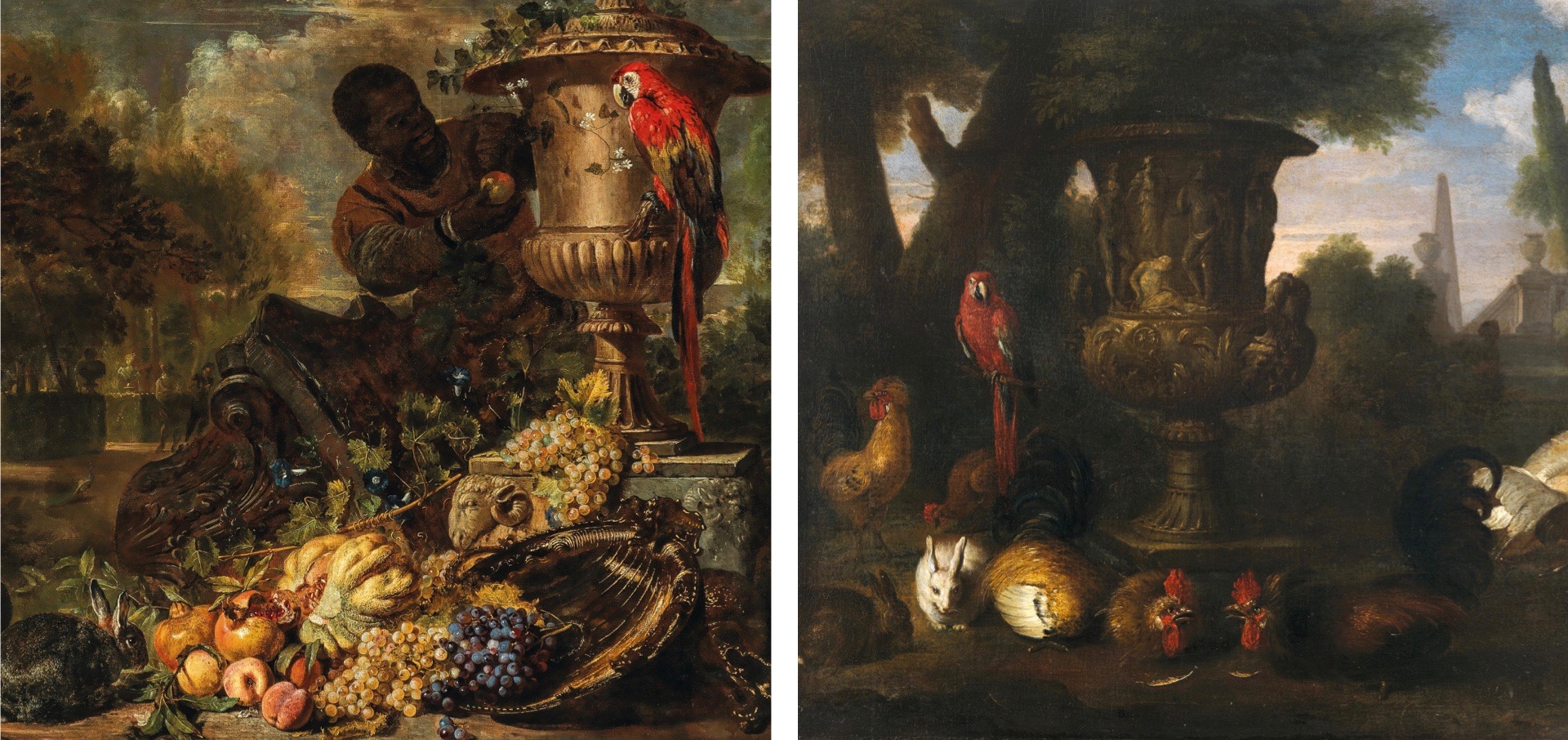
Left: David de Coninck - Fruit on a silver dish with rabbits and a monkey by a broken capital with an ornamental urn and a black page boy feeding a parrot; Right: Follower of David de Coninck - A red ara, a rabbit and roosters near an ancient vase, in a landscape
David de Coninck - Fruit on a silver dish with rabbits and a monkey by a broken capital with an ornamental urn and a black page boy feeding a parrot
oil on canvas, 122.5 x 175.5 cm, framed
This High-Baroque style still life painting is a work by the Flemish artist David de Coninck, one of the leading Flemish still-life painters of the 17th century. Once he arrived in Rome in 1671, he enjoyed very wide popularity that allowed him to be admitted to the Academy of San Luca in 1686.
The pictorial exuberance and vigour of the present work, along with the quotations after the antique, reveals the long-standing influence of Peter Paul Rubens and his compositions that followed his seminal Garden of Love. Indeed, the adeptness with which the monkeys and rabbits are executed in the present work could be attributed to De Coninck’s supposed training in the workshop of Jan Fyt, himself a pupil of Rubens’s long-standing collaborator Frans Snyders. See Price Estimate...
Follower of David de Coninck - A red ara, a rabbit and roosters near an ancient vase, in a landscape
oil on canvas, 61 x 73 cm, framed
This remarkable artwork bears several similarities to the paintings by the Antwerp-born artist David de Coninck. Today only about one-tenth of his identified works are signed by him. The Italian garden, in fact, is reminiscent of the Arcadian landscapes with ruins painted by this Flemish artist, who spent almost three decades in Rome from the early 1670s. The beautiful garden depicted here is the Pincio in Rome, in particular the part of the Park of Villa Medici in Rome.
The antique vase in the foreground is the famed Medici Vase, created in Athens in the first century A.D. and decorated with a representation of the sacrifice of Iphigenia. The white marble vase was one of many highly celebrated ancient artworks that the Medici family collected in the 16th century at their villa at the Pincio in Rome.
The antique vase is surrounded by skillfully depicted animals, in particular roosters, hens, a parrot and two rabbits. The white rabbit gazing at the observer is a recurrent element in De Coninck’s ouvre, and it has been suggested that it could be his hidden sign. The painting is closely related to Stefano Della Bella's etching, as shown by the representation of the Medici Vase and by the presence of the obelisk in the background. See Price Estimate...
Artcurial, Sale Old Master & XIXth Century Art (18 November)
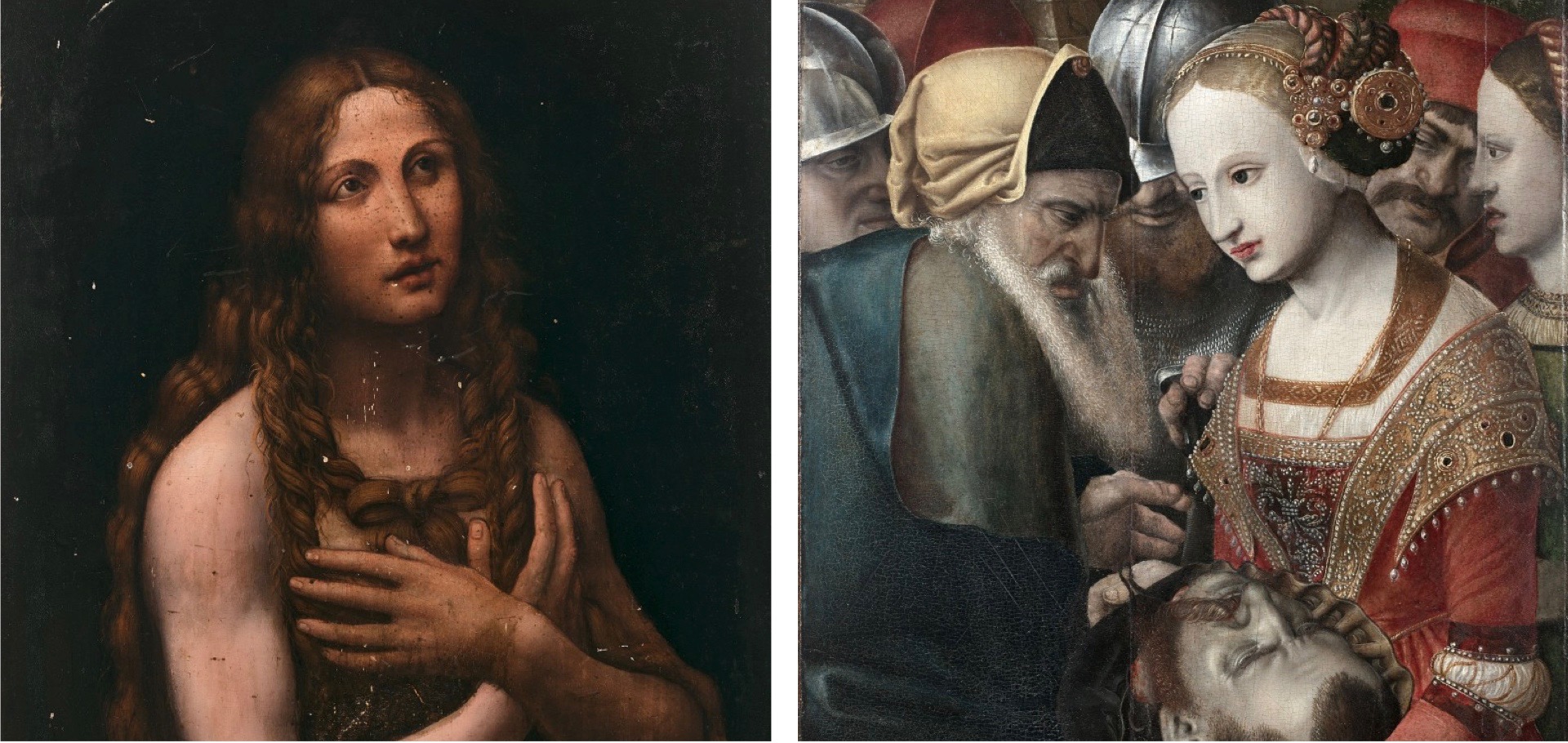 Left: Gian Giacomo Caprotti, called Salai - The Penitent Magdalene; Right: Attributed to Melchior Feselen - Judith bringing back the head of Holofernes
Left: Gian Giacomo Caprotti, called Salai - The Penitent Magdalene; Right: Attributed to Melchior Feselen - Judith bringing back the head of Holofernes
Gian Giacomo Caprotti, called Salai - The Penitent Magdalene
oil on panel, 65 x 51 cm
In the 16th century, some painters began to create deeply sensual artworks of female saints and heroines that fluctuate between the sacred and the profane. Mary Magdalene was one of the preferred subjects in Italy, embodying the concept of transgression and absolution. She became a powerful symbol of the purification from sinner to saint: her life changed when she encountered Jesus, and after his death, she preached the gospel, converting others to Christianity. She eventually retired to the wilderness to live in solitary penance to expiate the sins of her past.
Full of earthy drama, this rare painting depicts Mary Magdalene emerging out of the shadow into light with the use of chiaroscuro. Unlike the more common reclining Magdalene in a cave, the present example shows the saint straight on, with her arms crossed over her chest and her long hair covering her body. The painter is Gian Giacomo Caprotti, nicknamed Salaì from Leonardo da Vinci, and he was the lover and the favorite pupil of the great artist from 1490 to 1518. He also served as a model for several of Leonardo’s paintings. See Price Estimate...
Attributed to Melchior Feselen - Judith bringing back the head of Holofernes
oil on panel, 51 x 38,50 cm
Melchior Feselen was a German painter and engraver of the 16th century. He was taught by Hans Schäufelin and worked as a painter throughout southern Germany. His paintings are rich in composition, with a great number of figures highly finished, and in a style quite uniquely his own.
This museum-quality painting shows an elegant Judith wearing a richly embroidered gown with precious jewelry details. In front of her stands out the profile of one of the elders of Betulia, who came to see his victory. The head of the Assyrian general Holofernes, already gray in complexion is revealed from Judith's leather bag. The long eyelashes that line Judith’s eyes and her rich garments are reminiscent of the great Bavarian masters of the 16th century Lucas Cranach. See Price Estimate...
 Left: The Monogrammist PW - The arrest of Joseph, accused by Potifar's wife; Right: Workshop of Pieter Coecke van Aelst - The Last Supper
Left: The Monogrammist PW - The arrest of Joseph, accused by Potifar's wife; Right: Workshop of Pieter Coecke van Aelst - The Last Supper
The Monogrammist PW - The arrest of Joseph, accused by Potifar's wife
oil on oak panel, signed with monogram and dated, 75 x 119 cm
The identity of the author of the present painting, signing his works with the two letters P and W, remains to be clarified. It has been suggested that the painter could be the Flemish artist Pieter Willemsz, whose several perspectives are mentioned in inventories of the 17th century.
In any case, in this work the anonymous monogrammist clearly shows his ability to represent palace interiors with great precision and richness of details. The perspective is perfectly executed and conveys a great sense of depth. See Price Estimate...
Workshop of Pieter Coecke van Aelst - The Last Supper
oil on oak panel, 68,50 x 81 cm
The present panel representing the Last Supper in a sumptuous architecture is closely related to the works by the Flemish painter Pieter Coecke van Aelst. He was a student of Bernard van Orley and after his journey to Italy he was admitted to the Antwerp Guild of Saint Luke as a master, becoming the chief exponent of Flemish Mannerism. He was both the teacher and father-in-law of Pieter Brueghel the younger.
His paintings repeatedly reveal Italian influences, a tendency which also holds true for the present work. The artist’s interest in classical architecture also manifests itself in his translations of the architectural treatises by Sebastiano Serlio and Vitruvius into Flemish. See Price Estimate...
Lempertz, Old Masters (14 November)

Left: North Italian School late 16th century, An Allegory of Abundance as Alma Mater, with a depiction of the Four Elements; Right: Ambrosius Bosschaert the Younger Still Life with Roses, Tulips, Iris and a Caterpillar on a Table Oil on panel. 36.5 x 48.5 cm
North Italian School late 16th century - An Allegory of Abundance as Alma Mater, with a depiction of the Four Elements
oil on canvas. 130 x 192 cm
This high-quality painting represents the personification of the Abundance as Alma Mater in a classical style, surrounded by the symbols of the Four Elements. The nude figure of Abundance is here represented as Ceres, the goddess of fertility, showing a cornucopia at her left and surrounded by putti personifying the four elements, and still life depictions recalling the idea of abundance, like the dog and hen feeding their young. mThis interesting work is a fascinating example of the interchange between the Italian and northern schools, a dialogue that began in the fifteenth century and was encouraged by the dissemination of prints across both sides of the Alps during the sixteenth. In particular, the style and composition closely recall the large allegorical paintings by northern artists such as Martin de Vos, Frans Floris, or Lambert Sustris who were active in Venice, where they were deeply influenced by the art of Titian. See Price Estimate...
Ambrosius Bosschaert the Younger - Still Life with Roses, Tulips, Iris and a Caterpillar on a Table
oil on panel. 36.5 x 48.5 cm
Ambrosius Bosschaert the Younger was the son of the leading flower painter Ambrosius Bosschaert the Elder, who established a tradition that influenced an entire generation of fruit and flower painters in the Netherlands.This exquisite still life presents various types of flowers: a carnation, a tulip, columbine, an iris, various roses, two chrysanthemums, clematis and a snake's head fritillary. Rendering meticulous detail, Ambrosius Bosschaert the Younger conveyed the silky texture of the petals, the prickliness of the rose thorns, and the fragility of opening buds.
The painting included also symbolic and allegorical meanings: the butterfly, short-lived like flowers, could be interpreted as a reminder of the brevity of life and the transience of its beauty. See Price Estimate...
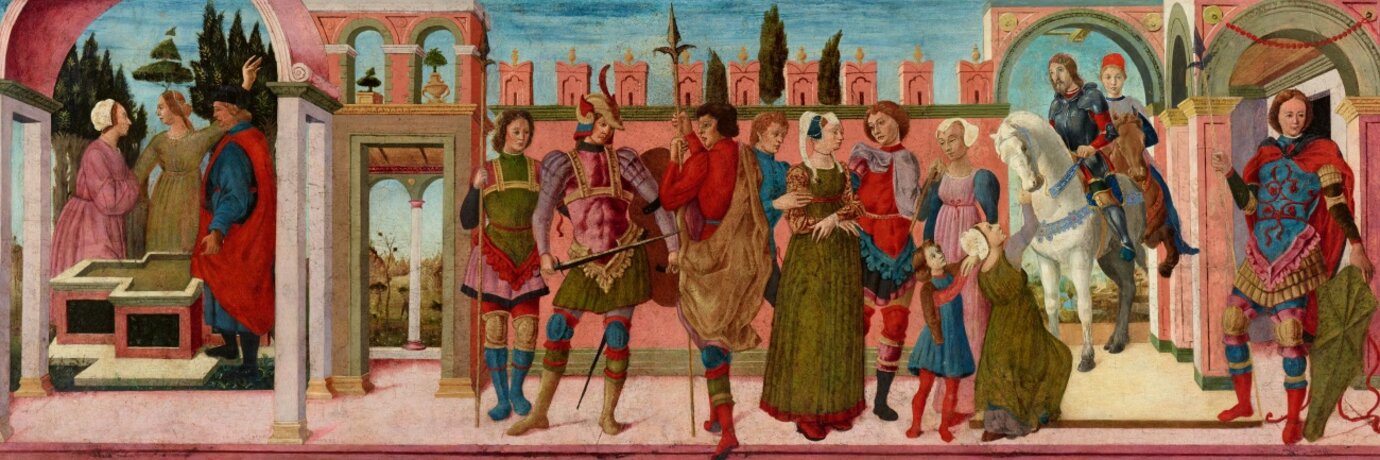
Marco Ruggeri, called Marco Zoppo - Susanna and the Elders / Susanna before the Judge
Marco Ruggeri, called Marco Zoppo - Susanna and the Elders / Susanna before the Judge
tempera on panel laid down on canvas, laid down on panel. 58.5 x 171.7 cm
This 15th-century panel, executed by the Italian artist Marco Ruggeri called lo Zoppo, was probably thought as a spalliera, part of wall paneling, for its large dimensions. It depicts two scenes in the form of a frieze from the Old Testament stories of Susanna. In the left-hand scene, framed by a rounded arch, one sees Susanna with the two elders. They indecently approach her and threaten to accuse her of adultery if she is not compliant. In the center, Susanna has led away as a result of the false accusations from the elders. On the right, also framed by an arch, stands Daniel, in armour and propped up by his shield, preventing Susanna's condemnation. See Price Estimate...
Van Ham, Fine Art (19 November)
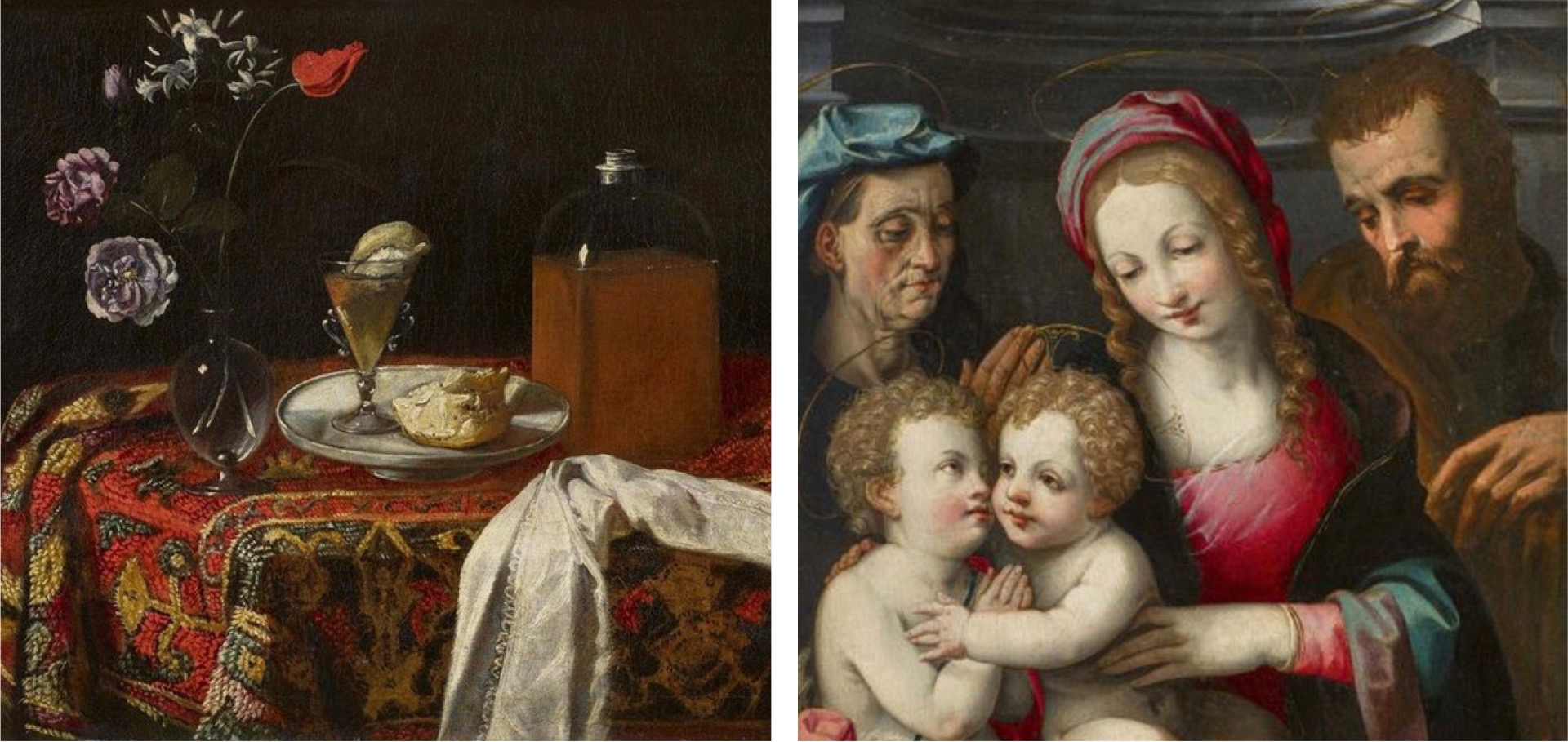
Left: Right: Brina (del Brina) Francesco, Ca. 1550 - The Holy Family
Pier Francesco Cittadini - Still Life
oil on canvas. Relined. 85 x 59cm. Framed
The present composition depicts a table covered by an oriental carpet with some objects arranged in such a way as to give the impression that a person has just left this place. A broken piece of pastry is partly dipped into a glass of liqueur, the bottle next to it is not closed, the cards are carelessly pushed together, the white napkin hangs over the edge of the table and threatens to slide down. Only the flowers in the shimmering painted glass vase are static, but they stand dangerously close to the edge of the table, perhaps referring to the fragility of apparent calm.
This high quality still life was painted by the Milanese artist Pier Francesco Cittadini and it is typical of his oeuvre and artistic conception. The individual objects that he represents are the protagonists of his creations, and as such, they are shown with all of their individuality. See Price Estimate...
Brina (del Brina) Francesco, Ca. 1550 - The Holy Family
oil on wood. 63 x 44cm. Framed
Francesco del Brina was an Italian painter active mainly in Florence who interpreted Mannerism using a classical language of form. After his apprenticeship with Michele Tosini, Francesco del Brina specialised in compositions intended for private devotion. During the late sixteenth century, when Mannerism was spreading in Europe, the movement developed in Italy in line with the demands of the Roman Catholic church, which at the time of the Reformation sought to tie believers to the church all the more urgently and called for an art that would convey the true content of faith.
In the present painting, the homage to the famed master Leonardo da Vinci is particularly evident in the sfumato and the tender embrace of the Child Jesus and Saint John in the foreground. See Price Estimate...
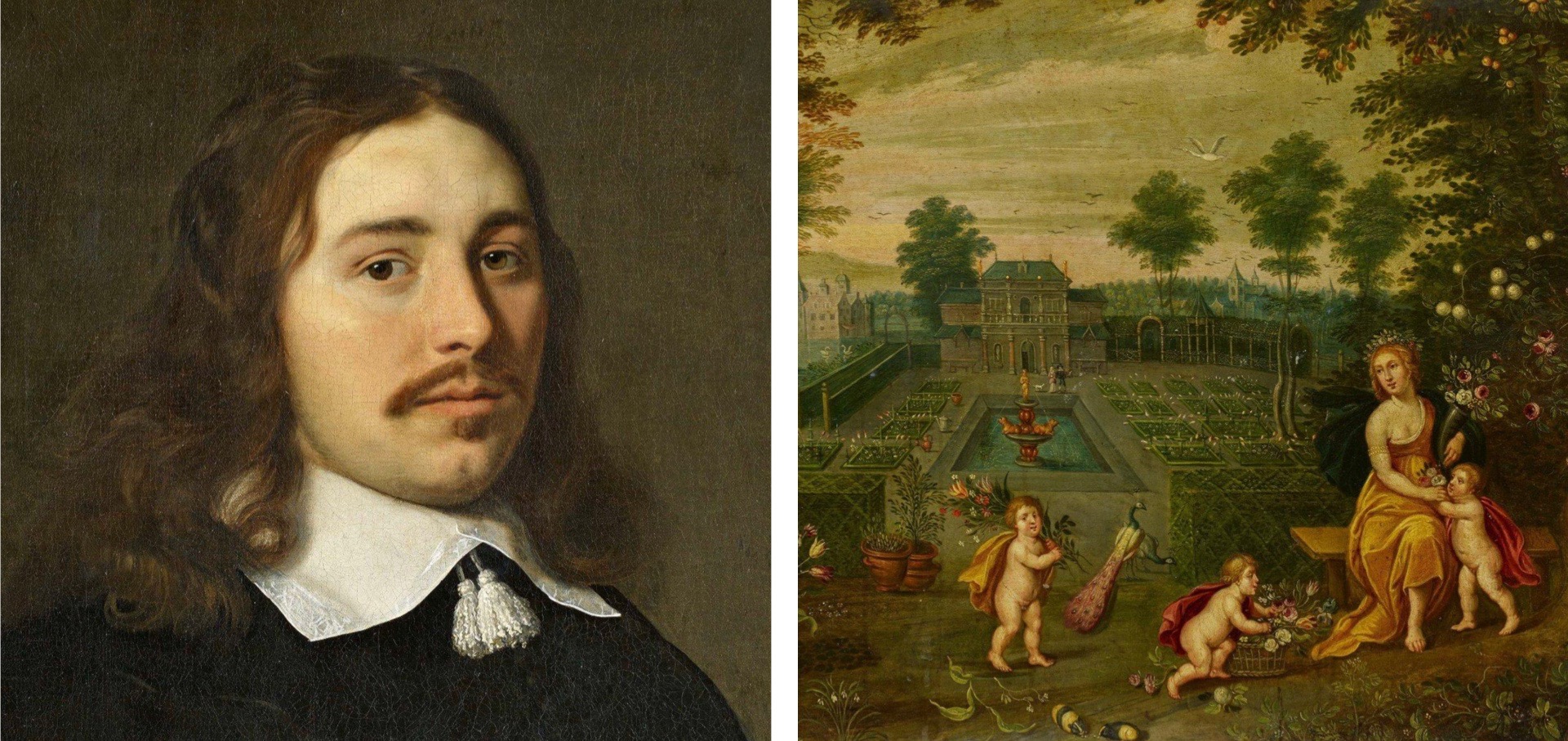
Left: Attributed to Batholomäus van der Helst - Portrait of a gentleman; Right: Circle of Peeter van Avont - Allegory of Abundance
Attributed to Batholomäus van der Helst - Portrait of a gentleman
oil on canvas. Relined. 49,5 x 45,5 cm. Framed
The present portrait could be an early work by the Dutch portraitist Batholomäus van der Helst. His earlier portraits are in fact entirely focused on the person portrayed, and the background is in monochrome earth tones. The sitters of the painter came principally from the upper-middle class and the social elite of Amsterdam and also the nobility.
The man here portrayed bears a strong resemblance to the "gentleman in the black atlas office” by Van der Helst in the Alte Pinakothek in Munich, dated 1649, and it has been suggested that he could be the same sitter of the current lot. See Price Estimate...
Circle of Peeter van Avont - Allegory of Abundance
oil on copper. 53 x 72cm. Framed
In the art of the Low Countries in the later 16th and 17th centuries, the allegorical theme of the four elements became common to symbolize the equilibrium of nature and its sensual beauty. The depiction of these paintings allowed the artists to display their knowledge of the visible world as well as their technical mastery in the depiction of landscapes, animals, flowers, and natural elements.
The present painting shows the allegory of the Abundance of the earth. This element is represented at right by Pomona, the goddess of the earth, and of the fruitful abundance, with a cornucopia in her left hand and surrounded by putti. The goddess, known also as Ceres, was worshiped over a large part of ancient Italy. See Price Estimate...
LOT-ART SERVICES FOR COLLECTORS
Saved-Searches and Personalized Alerts: Save all your keywords to quickly run your favorite searches in a single click. At your discretion, we can then send you email alerts when new lots matching your saved-searches are available, so you will always have the most updated overview of the art market. Be the first to know when your favourite lots are for sale with customized alerts! On the page header click on "My Searches" -> "Create New Search".
Art Investment Advisory: proposing a financial approach to art collecting, Lot-Art offers a synergic cluster of tools for optimal investment decision-making in art-related assets. Lot-Art can help you selecting artworks & luxury collectables with the highest degree of liquidity and opportunity of return. This service will best serve privates and institutions who wish to invest in art as an asset class but don’t have the expertise to unveil and select the best deals in the global art market, Download the Art Investment brochure.
Valuate & Sell: you can appraise for FREE the value of your art & collectibles with the purpose of selling at auction. Disclose the monetary value of your assets, request a free valuation »
Buy Now: Lot-Art has added, aside to auctions browsing, the opportunity to search artworks and luxury collectibles from trusted private collectors, artists and galleries. If you are not yet acquainted with the thrill of bidding at auction you can just buy selected artworks and luxury assets in perfect relax proposing your offer through the Lot-Art Gallery.
Wish List: Save your preferred lots in your Wish List to access them quickly, before and after the auction. We can also send you a reminder to place your bid before the auction date, so you will never miss a sale! Your Wish List is also a perfect tool to catalogue your purchases: to record the date, location and sale price of the items in your collection.
Sold & Aftersale: LOT – ART offers the opportunity to search through unsold auction lots in the Aftersale section. Use it to directly get in touch with the auction house if you are interested in negotiating a purchase. In our Sold Section, you will find historical price information recorded at auction, useful information before finalizing your bid.
Catalogue Search: Browse catalogues by auction house and Country clicking on "AUCTIONS" in the homepage header.
LOT-ART | The Art Investment Platform
Other interesting articles
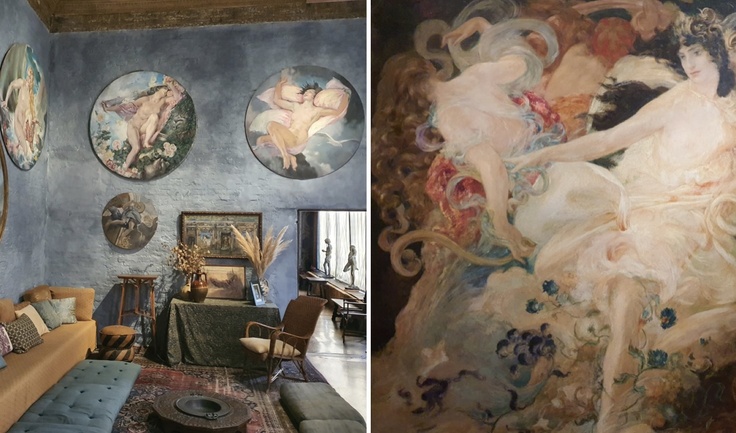
|
Mon Apr 22 2024
Enchantment at Palazzo Fortuny: 'Selva' by Eva Jospin in VeniceLEFT: Photograph of the Mariano Fortuny Y Madrazo Museum; RIGHT: Wagnerian Cycle. Parsifal. The Flower Maidens, Mariano Fortuny y Madrazo, 1896 Mariano Fortuny y Madrazo, born in Granada in 1871, was a renowned Spanish artist celebrated for his innovative contributions in the realms of fashion, photography, and lighting design. Fortuny gained global fame for the... |
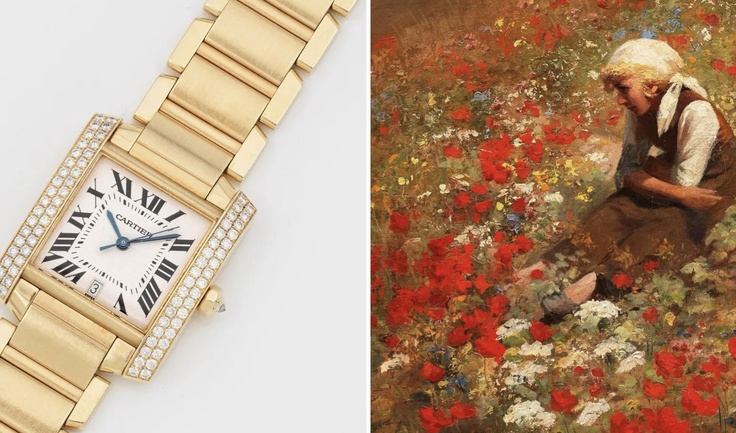
|
Sat Apr 20 2024
International Art at Schloss Ahlden, GermanySchloss Ahlden, Germany presents the 190th International Art Auction in four parts: Part I on 27 April Part II on 28 April Part III on 3 May Part IV on 4 May Discover the Auction Highlights or browse the full catalogues here » SELECTED LOTS LEFT: Lovis Corinth (1858 - 1925) - "Pair of Centaurs" Oil on canvas, laid down on canvas. Signed and dated 1917. See Date & Price... |
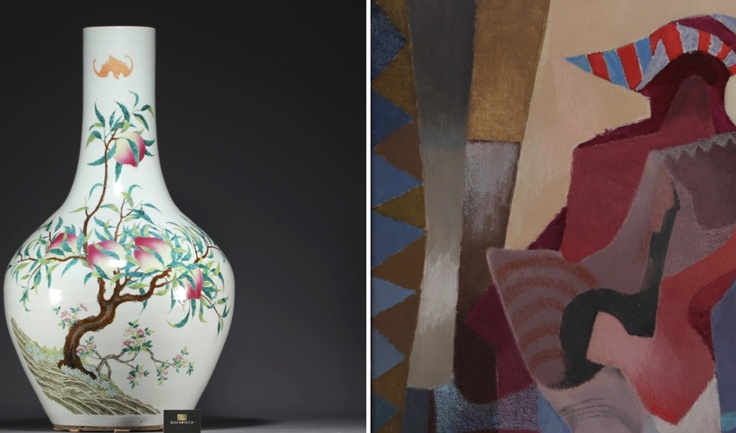
|
Fri Apr 19 2024
Fine & Decorative Art at Goldfield, LuxembourgGoldfield, Luxembourg presents the Auction 'Succession of Baron Lejeune & Miscellaneous' on April 27th. The catalogue features fine art, Asian and ethnographic art, jewellery & watches, silverware, design and classic furniture. Discover the Auction Highlights or browse the full catalogue here » SELECTED LOTS LEFT: Michelangelo Barberi (1787-1867) attr. - Marble table... |

|
Wed Apr 17 2024
Post-War & Contemporary Art at Venduehuis der NotarissenVenduehuis der Notarissen presents the April Auctions: Post-War & Contemporary Art on 8 – 23 April (Online Auction) The Lucassen Collection Part 1 on 24 April (Hammer Auction) The Lucassen Collection Part 2 on 8 – 25 April (Online Auction) Discover the Auction Highlights or browse the full catalogues here » SELECTED LOTS LEFT: Marlene Dumas (1953) - "Fear of Babies" The... |